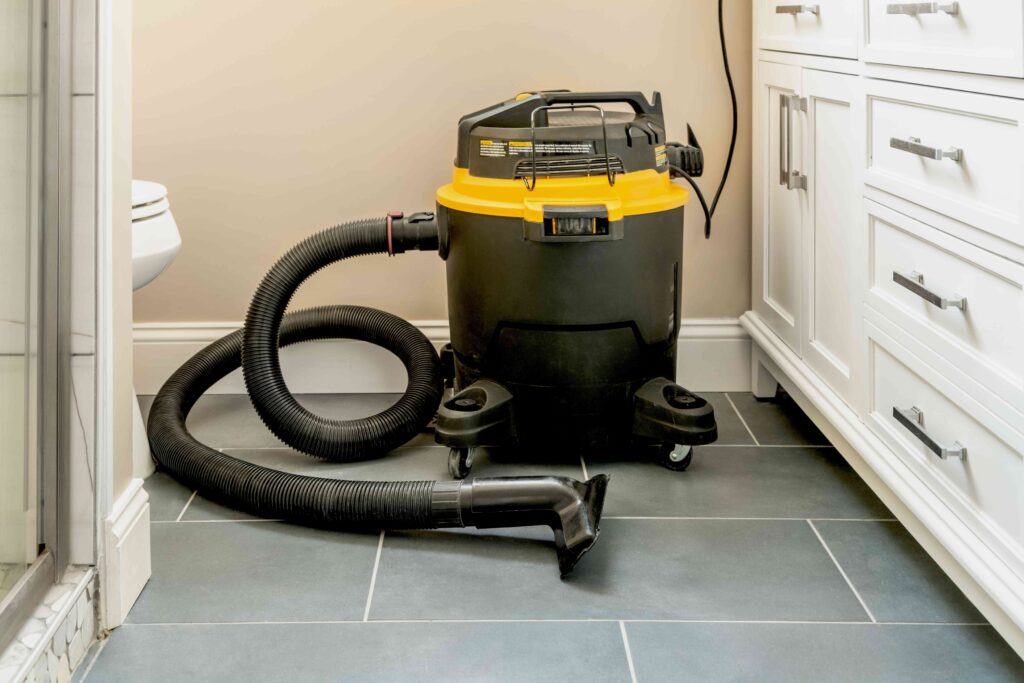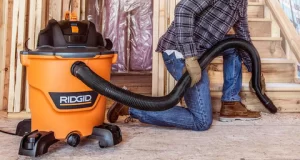How To Use A Wet Dry Vac

Mastering the Cleanup: A Comprehensive Guide on How to Use a Wet-Dry Vac
Introduction
A wet-dry vacuum, also known as a shop vac, is a versatile cleaning tool designed to tackle a variety of messes, from liquid spills to dry debris. Whether you’re dealing with a flooded basement, cleaning up after a home improvement project, or maintaining your workshop, knowing how to use a wet-dry vac properly is essential. In this comprehensive guide, we’ll explore the ins and outs of using a wet-dry vac effectively.
Table of Contents
- Understanding the Wet-Dry Vac
- Components of a Wet-Dry Vac
- Safety Precautions Before Use
- Setting Up Your Wet-Dry Vac
- Using Your Wet-Dry Vac for Dry Messes
- Using Your Wet-Dry Vac for Wet Messes
- Maintaining and Cleaning Your Wet-Dry Vac
- Accessories and Attachments for Enhanced Functionality
- Troubleshooting Common Wet-Dry Vac Issues
- 10 FAQs About Using a Wet-Dry Vac
- Conclusion
1. Understanding the Wet-Dry Vac
A wet-dry vac is a powerful cleaning tool that can handle both dry and wet messes. It features a robust motor and durable construction, making it suitable for a range of applications, including household cleaning, workshop cleanup, and emergency water removal.
2. Components of a Wet-Dry Vac
- Motor: The heart of the wet-dry vac, responsible for generating suction power.
- Collection Tank: A large container that holds both liquid and solid debris.
- Hose: Connects to the vacuum and allows you to reach different areas.
- Nozzle and Brushes: Various attachments for different cleaning needs.
- Filter: Captures fine dust and debris, preventing them from entering the motor.
- Handle and Wheels: Facilitate easy mobility and transport.
3. Safety Precautions Before Use
Before using your wet-dry vac, take the following safety precautions:
- Read the Manual: Familiarize yourself with the manufacturer’s instructions and safety guidelines in the user manual.
- Inspect the Cord: Ensure the power cord is in good condition, and there are no exposed wires.
- Check Filters: Ensure the filters are clean and properly installed.
- Use Ground Fault Circuit Interrupter (GFCI): If working with liquids, plug the wet-dry vac into a GFCI outlet to reduce the risk of electrical shock.
4. Setting Up Your Wet-Dry Vac
Setting up your wet-dry vac is a straightforward process:
- Plug In: Ensure the vacuum is plugged into a suitable power source.
- Select Attachment: Choose the appropriate nozzle or attachment based on the type of mess you’re tackling.
- Check Filters: Confirm that the filters are clean and properly installed.
- Position Hose: Connect the hose to the vacuum and position it where you need to clean.
5. Using Your Wet-Dry Vac for Dry Messes
When dealing with dry messes, follow these steps:
- Select Attachment: Choose a nozzle or brush suitable for dry debris.
- Adjust Settings: Some wet-dry vacs have adjustable settings for different types of debris. Adjust as needed.
- Vacuum: Simply run the vacuum over the dry debris, ensuring the nozzle makes good contact with the surface.
6. Using Your Wet-Dry Vac for Wet Messes
For wet messes, the process is slightly different:
- Choose Wet Attachment: Use a nozzle specifically designed for liquids.
- Empty Collection Tank: Ensure the collection tank is empty before starting.
- Vacuum Liquids: Move the wet-dry vac slowly over the liquid, allowing it to be efficiently suctioned into the tank.
- Monitor Water Levels: Stop periodically to empty the collection tank as needed.
7. Maintaining and Cleaning Your Wet-Dry Vac
Proper maintenance ensures the longevity and optimal performance of your wet-dry vac:
- Empty the Tank: After each use, empty the collection tank to prevent odors and maintain suction power.
- Clean Filters: Regularly clean or replace filters to prevent clogs and maintain efficient airflow.
- Inspect Hoses and Attachments: Check hoses and attachments for any blockages or damage, and clean them as necessary.
- Store Properly: Store your wet-dry vac in a cool, dry place, and protect the power cord from damage.
8. Accessories and Attachments for Enhanced Functionality
Many wet-dry vacs come with a variety of accessories and attachments to enhance their functionality:
- Extension Wands: Extend your reach for overhead or hard-to-reach areas.
- Crevice Tool: Perfect for reaching into narrow spaces and corners.
- Brush Attachments: Ideal for cleaning upholstery, carpets, and other fabric surfaces.
- Utility Nozzle: A versatile attachment for both wet and dry messes.
- Floor Brush: Designed for cleaning larger floor areas efficiently.
9. Troubleshooting Common Wet-Dry Vac Issues
If you encounter issues with your wet-dry vac, consider these troubleshooting steps:
- Loss of Suction: Check for clogs in the hose or attachments and clean filters.
- Strange Noises: Inspect the impeller for debris, and ensure all components are securely attached.
- Motor Overheating: Allow the motor to cool down if it overheats. Check for blockages and ensure proper ventilation.
- Leaking Water: Ensure the collection tank is properly sealed and that all hoses and connections are secure.
10. 10 FAQs About Using a Wet-Dry Vac
Q1: Can I use my wet-dry vac without a filter?
A1: It’s not recommended. The filter prevents debris from reaching the motor, protecting it from damage.
Q2: Can I vacuum up hazardous materials with a wet-dry vac?
A2: No, wet-dry vacs are not designed for hazardous materials. Consult local regulations for proper disposal.
Q3: Can I use my wet-dry vac as a regular vacuum cleaner?
A3: While wet-dry vacs can handle dry debris, they may not be as suitable for fine dust as regular vacuum cleaners.
Q4: How often should I clean or replace the filter?
A4: The frequency depends on usage. Check the filter regularly, and clean or replace it when you notice a decrease in suction power.
Q5: Can I use my wet-dry vac to unclog a drain?
A5: Some wet-dry vacs have a drain-cleaning feature, but not all are suitable for this purpose. Check your user manual for guidance.
Q6: Can I vacuum hot ashes with my wet-dry vac?
A6: Never vacuum hot or flammable materials. Wait for ashes to cool completely before cleaning.
Q7: Can I use my wet-dry vac to remove water from a flooded area?
A7: Yes, wet-dry vacs are designed for water removal. Use the appropriate attachment and empty the tank regularly.
Q8: Can I vacuum large debris like nails or screws?
A8: Yes, many wet-dry vacs can handle larger debris. Use the appropriate attachment and empty the tank as needed.
Q9: Can I use my wet-dry vac to inflate inflatable items?
A9: Some wet-dry vacs have a blower function, but not all. Check your user manual to determine if your model has this feature.
Q10: How do I prevent odors in my wet-dry vac?
A10: Regularly empty the collection tank, clean filters, and allow the wet-dry vac to air out after use to prevent odors.
Conclusion
Mastering the use of a wet-dry vac opens up a world of cleaning possibilities, from tackling liquid spills to efficiently removing dry debris. By understanding its components, following safety precautions, and incorporating proper maintenance, you can make the most of this versatile cleaning tool. Whether you’re a DIY enthusiast, a homeowner, or a workshop aficionado, a wet-dry vac is a valuable asset in your cleaning arsenal, ready to handle a wide range of messes with ease.



